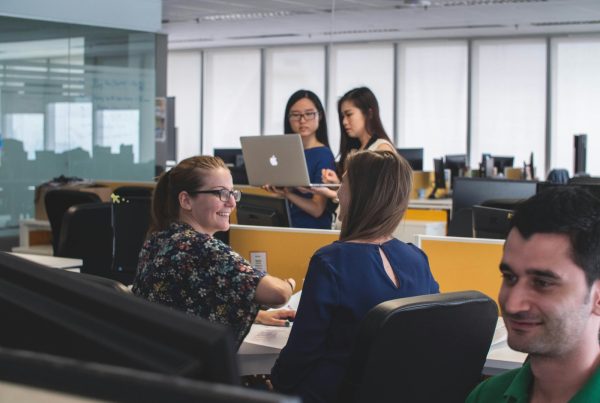Stuart Duff, Head of Development at business psychologist, Pearn Kandola, considers why home working doesn’t always feel good.
After an unpredictable few months, many office workers all over the UK have now become accustomed to working from home. With guidance from the government to �work from home if you can�, the new normal of working from our dining table, study or even bed is now second nature.
We�ve debated the positives and negatives of working from home extensively throughout the pandemic, and even did so when it was less common pre-COVID. Avoiding a lengthy commute, getting on top of our inboxes and better time efficiency are all commendable surface benefits. In fact, we�ve never been more productive than we are now.
So, if we�re ticking more boxes on our to-do list than ever before, why doesn�t this new way of working feel as good as it should?
It all comes down to our nature: humans are social animals. We love to socialise, bounce off others and work collaboratively. Even the most introverted employees will tell you that going to work is about being part of a team.
Working from home poses a huge threat to teams in that it doesn�t allow them to communicate in the same way as they would in the office. A lack of general chit-chat throughout the working day has placed a greater focus on productivity and completing tasks quickly.
Processes have become less collaborative, and relationships have taken a back seat. While we�ve all adapted to the change of working from home well, the only contact we now have with co-workers is over video conferencing in meetings that are scheduled and regimented. Very rarely do we spend the first ten minutes of a call catching up, and as a result, we�ve lost all spontaneous opportunities to connect with others.
In losing those connections, our work has become transactional. For example, for a leader to delegate a task to a team member, all they need to do is send a quick email. On the receiving end, employees don�t get the understanding of why they�re being given an extra item to add to their to-do list, simply because it�s harder to delegate and create a sense of understanding when you can�t look into someone�s eyes.
As a result, leaders face a challenge in keeping employees engaged, whilst also championing productivity and fostering a culture of inclusivity.
Thought, task and people leadership
To perform at their very best, leaders should recognise three different areas of leadership: people leadership, task leadership and thought leadership.
While task leadership is about driving others to complete their goals and deliver results, thought leadership looks to the future and initiates change where it�s needed. People leadership focuses on motivation, engagement and development of colleagues, with the purpose of getting the most out of employees as individuals. Working from home and a lack of spontaneous conversation has created a focus on task leadership, while both thought and people leadership have diminished.
Though this has made us more productive in the short term, what are the longer-term risks of this way of working?
Without the presence of thought leadership within our team, many of us are solely focused on what�s going on right now. The difference between this and our usual way of working is that we�ve taken our eyes off the future. That, in turn, can lead to a diminished sense of inclusion and belonging, as employees no longer associate themselves and their future with the workplace. In the current climate, ensuring that employees feel secure and can be confident in their future as a member of your team is vital.
In addition, without going into the office itself, it�s difficult to distinguish your working life from your home life, which can leave you feeling less engaged and part of the in-group. We surveyed 500 people throughout lockdown, half of whom were furloughed, and the other half worked from home. Both groups equally felt less engaged and committed to their work, whether they were actually working during this time or not.
People leadership is vital during challenging times, and though it has been made more complex due to the pandemic and regular working from home, it�s now more important than ever. Lower levels of employee engagement and motivation can stunt development, and fewer opportunities to connect results in teams feeling unsupported by their leaders. Over time, this can cause feelings of isolation to develop, and employees will begin to disconnect, further resulting in low levels of emotional trust between colleagues. Conversely, cognitive trust – believing that employees are productive and committed to achieving what is expected of them � is likely to remain the same whilst working from home and perhaps grow over a long term.
When emotional trust in a team is low, team members may perform the basic tasks but important team factors such as openness, mutual support and encouragement will fall, leading to lower creativity, lower energy, and lower involvement. Without these open, meaningful conversations in personal, levels of emotional trust fall leading to disengagement.
This feeling of disengagement can spiral negatively over time, meaning that employees won�t actually be as productive as we�d presume with a new task-focused way of working from home. Not only that, but spending less time with colleagues doesn�t allow for employees to learn from those around them, further stunting their engagement and perhaps inhibiting development. That�s why it�s vital for leaders to recognise and address the issue.
What are the solutions?
As we�ve identified, the main issue with working from home is a lack of personal communication. From our own research into the business case for video communications, we found that close contact, and most importantly non-verbal cues, significantly increases trust between team members and will enable trust to be built more quickly. Face-to-face communication also enables a sense of shared identity and stronger interpersonal bonds to be created.
While it�ll never be the same as speaking to someone in person, video conferencing is currently the closest thing we have to face-to-face conversations. And, although we�ve become much more familiar with the technology throughout the pandemic, we need to keep making advances in this area to improve the employee experience from home.
Where you have the opportunity, add an extra five to ten minutes on to the start of every meeting for personal conversations. As a leader, you should be asking your team how they are first, as opposed to what they�re doing. These interpersonal conversations should help establish trust between co-workers, and allow you to re-emphasise their value by showing that you care.
Communication really is key, so make sure to speak to all team members about what�s going on in the business and what the plans are for the future. This allows you to incorporate both thought and task leadership whilst working from home. Here at Pearn Kandola, for example, we have a team meeting every morning where every employee contributes to the conversation.
A meeting every day might not be a productive use of time in every organisation, but making sure that teams have regular meetings to get up to speed is vital. Similarly, leaders should encourage team members to call each other and catch up � both about work and their personal lives � as opposed to sending emails and instant messages where they can. One of the best ways to do this is to lead by example; don�t leave it to your team members to check in on each other, ensure that you�re proactively reaching out to remote employees and check in on their wellbeing.
As we look to the future, and a number of organisations hope to offer working from home on a more permanent basis, it falls to leaders to think about technology and what every employee needs to feel a part of the workplace. Providing extra screens where a live feed of the office can be seen, so that home workers can feel the office around them, for example, could be a way to boost inclusivity.
As a leader, it�s your responsibility to take on feedback from employees and help them make the most of their working day, whether they�re spending it in the office or at home. There is a balance to strike between working in an office and working from home, and with that, a balance between productivity and inclusivity. Future proofing is a vital part of a leader�s role, and with that comes the responsibility to prepare employees to work from home in the long term.




